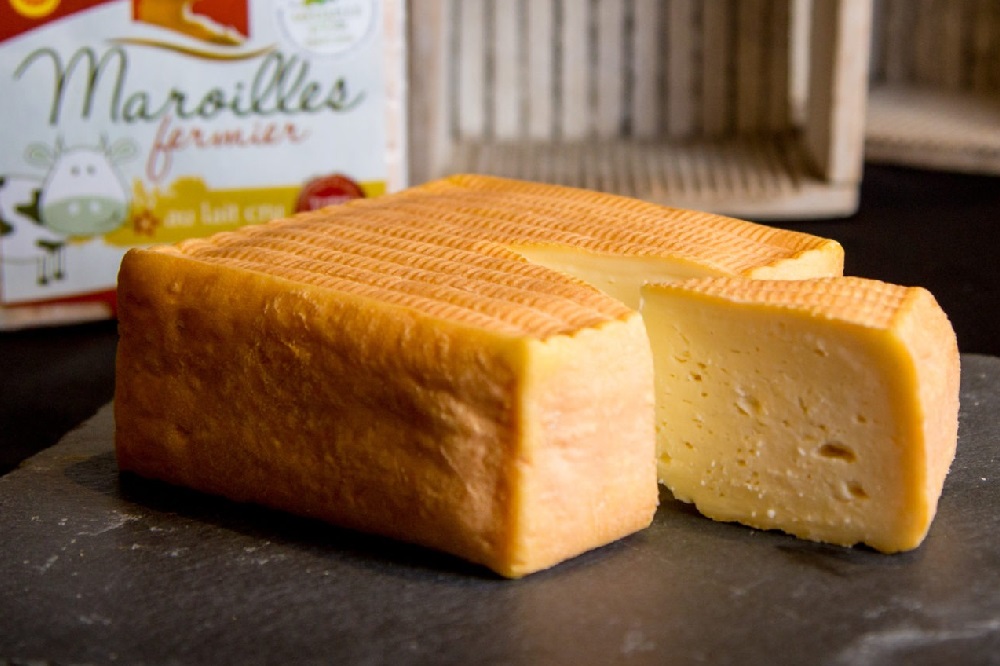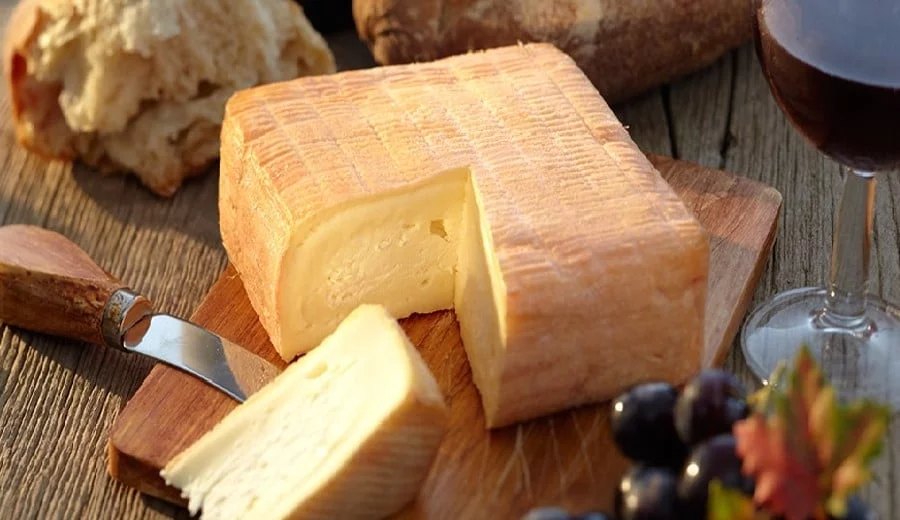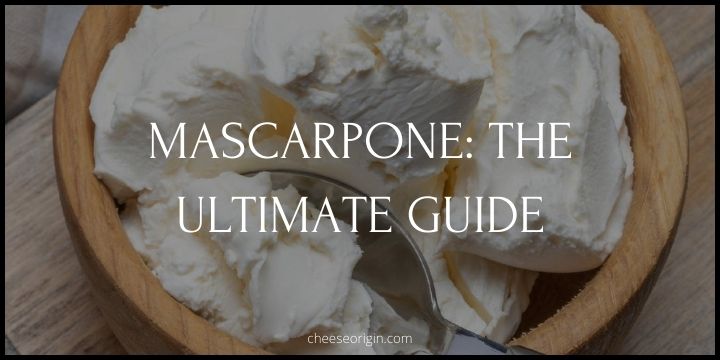What is Maroilles? A Taste of French Heritage

In the heart of France’s Nord-Pas-de-Calais region, a culinary treasure known as Maroilles has been ripening for centuries. This robust cheese, with its distinctive orange rind and pungent aroma, is more than just a delicacy — it’s a slice of French heritage.
Born from the lush pastures and time-honored traditions of northern France, Maroilles is a testament to the country’s rich gastronomic history. Its complex flavors and unique production process make it a must-try for any cheese lover.
Quick Facts About Maroilles
| Fact | Details |
|---|---|
| Origin | Nord-Pas-de-Calais, France |
| Age | Dating back to the 10th century |
| Shape and Size | Usually sold in individual square shapes, measuring 13cm by 13cm, and weighing around 700g |
| Appearance | Soft, crumbly, golden body and a reddish-brown crust |
| Taste | Maroilles has a powerful, pungent aroma but its flavor is surprisingly mild, with a slight bitterness |
| Production Process | The cheese is washed with salt and water for at least five weeks, but some variations are aged for up to four months |
| Pairings | Pairs well with robust red wines, dark beers, or cider |
| Appellation d’origine contrôlée (AOC) Status | Received AOC status in 1955, meaning that it must be made according to specific methods and only in certain areas |
| Use in Dishes | Apart from being consumed on its own, Maroilles is also used in various regional dishes, including the famous Flamiche, a savory tart |
What is Maroilles?

Maroilles is a fascinating and delectable French cheese with a rich history and unique flavor profile. Originating from the small town of Maroilles in the Nord-Pas-de-Calais region of France, this cheese has been a cherished part of French culinary tradition for over a thousand years. Its name itself is an homage to its birthplace, reflecting the deep connections between food, culture, and geography.
The production of Maroilles involves a meticulous process that contributes to its distinctive characteristics. The curd of the cheese is washed with salt and water for at least five weeks, but certain variations may be aged for up to four months. This careful aging process results in a reddish-brown rind that envelops the soft, crumbly, golden body of the cheese.
Despite its powerful, pungent aroma – a common trait amongst many French cheeses – Maroilles offers a surprisingly mild flavor with just a hint of bitterness. This complex taste profile makes it a versatile addition to various dishes. Beyond being enjoyed on its own, Maroilles also stars in several regional dishes. One such example is the Flamiche, a savory tart that showcases the creamy, melty goodness of this cheese.
In 1955, Maroilles received Appellation d’origine contrôlée (AOC) status. This esteemed recognition affirms that Maroilles must be produced following specific methods and only within designated areas, ensuring the preservation of its quality and authenticity.
What Does Maroilles Taste Like?
Maroilles cheese is renowned for its strong, distinctive aroma that might be intimidating at first. However, its flavor is much milder than one might expect from its powerful scent.
The taste of Maroilles is complex yet approachable. It has a rich, full-bodied flavor that is slightly bitter, tangy, and salty, with a hint of sweetness. Some people also note subtle earthy and nutty undertones. The texture of the cheese is creamy and soft, which adds to the overall tasting experience.
Despite the strong smell, the taste of Maroilles is not overly pungent. It’s often described as balanced and smooth, making it enjoyable even for those who are not accustomed to strong cheeses.
It’s worth noting that the flavor can vary depending on the age of the cheese. Young Maroilles is milder and creamier, while older Maroilles is more robust and intense.
Maroilles Tasting Notes

| Aspect | Young Maroilles | Aged Maroilles |
|---|---|---|
| Aroma | Mild, creamy aroma with hints of fresh milk and grass. | Strong, pungent aroma that can be described as earthy and nutty. |
| Flavor | Mild with a slight bitterness, tanginess, and a hint of sweetness. More creamy and buttery. | More robust and intense flavor, with pronounced bitterness, tanginess, and earthy notes. |
| Texture | Smooth, soft, and creamy, melts easily in the mouth. | Firmer texture but still creamy. The rind may become more crumbly. |
| Pairings | Lighter wines like Beaujolais or white Burgundy, or a mild beer like a Belgian Witbier. | Robust red wines, dark beers, or cider to complement the strong flavor. |
| Best Use | Ideal for melting in dishes, spreading on bread, or in salads. | Great for savoring on its own, or paired with robust dishes. |
How is Maroilles made?
Maroilles cheese goes through a meticulous and time-honored process before it reaches the table. Here are the general steps involved in its production:
- Milk Collection: Maroilles is traditionally made from cow’s milk, which is collected from local farms in the designated region of France.
- Curdling: The fresh milk is heated and then curdled by adding rennet, an enzyme that causes the milk to coagulate. This process usually takes about 24 hours.
- Cutting and Draining: The curd is cut into small pieces to help drain the whey (liquid part). It’s then placed into molds to shape the cheese.
- Salting: Once the cheese has achieved its shape, it’s removed from the mold and salted. This helps to draw out more moisture and starts the development of the rind.
- Washing and Aging: The cheese is washed regularly with a saltwater solution, which encourages the growth of specific bacteria that give Maroilles its characteristic flavor and reddish-brown rind. The cheese is aged for at least five weeks, but some variations are aged up to four months.
- Packaging and Distribution: After aging, the cheese is packaged and ready for distribution. It’s typically wrapped in a distinctive rectangular wooden box.
What are the Ingredients in Maroilles?
| Ingredients | Explanation |
|---|---|
| Pasteurized Cow’s Milk | This is the base ingredient for Maroilles cheese. The milk is pasteurized to kill any harmful bacteria before the cheese-making process begins. |
| Cheese Cultures | These are added to the milk to start the fermentation process. They convert lactose into lactic acid and help develop the unique flavor and texture of the cheese. |
| Salt | Salt is added for taste and also to help draw out moisture from the cheese, aiding in its preservation. |
| Rennet | Rennet, an enzyme typically derived from the stomachs of ruminant animals, is added to coagulate the milk, turning it into curds and whey. This is a key part of the cheese-making process. |
10 Best Maroilles Substitutes
| Cheese | Reason for Substitution |
|---|---|
| 1. Limburger | Limburger has a similar strong aroma and flavor to Maroilles, making it a good substitute in recipes where these characteristics are important. |
| 2. Munster | Munster is another cheese known for its pungent aroma and strong flavor, similar to Maroilles. It also melts well, making it suitable for cooking. |
| 3. Taleggio | This Italian cheese shares the soft, creamy texture and robust flavor of Maroilles, making it a decent substitute. |
| 4. Epoisses | Epoisses is a washed-rind cheese like Maroilles, with a similar strong smell and rich, creamy flavor. |
| 5. Livarot | Known as “The Colonel” in France, Livarot is another washed-rind cheese with a pungent aroma and robust flavor that can stand in for Maroilles. |
| 6. Pont l’Eveque | This is a French cheese with a creamy texture and strong flavor, which makes it a good alternative to Maroilles. |
| 7. Brick Cheese | A milder choice, Brick Cheese can be a good substitute if you’re looking for something with a softer flavor but similar texture. |
| 8. Fontina | Fontina is less pungent than Maroilles, but it melts well and has a nutty, mild flavor that can work as an alternative. |
| 9. Reblochon | Reblochon is a soft washed-rind cheese with a creamy texture and nutty taste, making it a suitable substitute for Maroilles. |
| 10. Camembert | While milder, Camembert’s creamy texture and slight funkiness make it a potential stand-in for Maroilles, particularly in recipes where the cheese is melted. |
What Pairs Well With Maroilles?

Food that goes well with Maroilles:
- Bread: Rustic breads, sourdough, or baguettes can complement the robust flavor of Maroilles.
- Meats: Smoked meats, ham, and sausages can balance the strong flavor of Maroilles.
- Fruits: Apples, pears, and grapes can provide a sweet contrast to the pungent and salty flavor of Maroilles.
- Nuts: Walnuts, almonds, and hazelnuts can add a crunchy texture and mild flavor that pairs well with Maroilles.
- Dishes: Some specific dishes that work well with Maroilles include pork filet mignon with Maroilles cheese sauce, braised endives, blanched broccoli, and rice
- Cheeseboard: Maroilles can be served on a cheeseboard with other cheeses such as Brie, Camembert, and Roquefort for a variety of flavors and textures.
- Local Foods: Local foods from the Maroilles region in France, such as Aumonière de l’Ecaillon, Chaud biloute, Boulette d’Avesnes, and Abbaye du Mont des Cats, pair well with Maroilles.
- Dessert: Tarte au Maroilles is a popular dessert that features Maroilles cheese.
Beverage that goes well with Maroilles:
- Beer: Strong Belgian ales, Trappist beers, or other robust beers can hold their own against Maroilles’ strong flavor. A local beer from the Nord-Pas-de-Calais region where Maroilles is produced would also be a good match.
- Cider: Dry cider can provide a refreshing contrast to the pungent, creamy Maroilles.
- White Wine: A full-bodied white wine like Chardonnay or a sweet white wine like Sauternes can balance the salty, robust flavor of Maroilles.
- Red Wine: A bold red wine like Cabernet Sauvignon or Malbec can complement the strong flavor of Maroilles, especially if the cheese is served with meat.
- Port: A sweet, fortified wine like Port can provide a nice contrast to Maroilles’ savory flavor, especially when the cheese is served as part of a dessert course.

Frequently Asked Questions
1. How to pronounce Maroilles?
Maroilles is pronounced as “Mar-Wah”. The ‘ll’ in French is typically pronounced as a ‘y’ sound, but in this case, it’s silent. The ‘s’ at the end is also silent.
2. Can I eat Maroilles when I’m pregnant?
Maroilles is a soft cheese made from cow’s milk. It’s traditionally made with unpasteurized milk which can contain bacteria that could potentially be harmful to pregnant women, such as Listeria. However, if the Maroilles cheese is made from pasteurized milk, it would generally be safe to eat during pregnancy.
Here are 5 key points:
- Unpasteurized Milk: If the Maroilles is made with unpasteurized milk, it’s generally recommended that pregnant women avoid it due to the risk of Listeria infection.
- Pasteurized Milk: If the Maroilles is made with pasteurized milk, it should be safe for pregnant women to eat. Pasteurization kills any bacteria present in the milk.
- Cooking: If the cheese is cooked thoroughly (like in a quiche or on a pizza), it should be safe to eat because heat kills Listeria bacteria.
- Check the Label: Always check the label to see whether the cheese is made with pasteurized or unpasteurized milk.
- Consult Your Doctor: If you’re unsure, it’s always a good idea to consult your doctor or healthcare provider.
Remember, guidelines can vary by country and individual health circumstances, so it’s always best to seek advice from a healthcare professional.
Also read:
- What is Stracchino (Crescenza)? The Creamy Treasure of Northern Italy
- What is Brie de Melun? An Ancestor of All Bries
- What is Cooper Sharp Cheese? A Taste of Tradition
- What is Pepper Jack Cheese? The Spicy Star of American Dairy
- What is Gouda? The Golden Glory of Dutch Cheese
- What is Quark Cheese? A Hidden Dairy Gem
- What is Livarot Cheese? The Pungent Delight from Normandy





